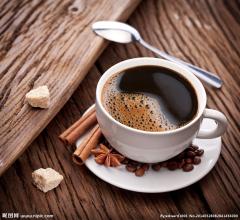Indonesian Coffee products from Rasuna Wahana Manor in Sumatra Coffee producing area, Indonesia
In the 17th century, the Dutch first introduced Arabica saplings to Ceylon (present-day Sri Lanka) and Indonesia.
In 1877, a large-scale disaster hit the Indonesian islands, coffee rust destroyed almost all the coffee trees, people had to give up Arabica, which had been in operation for many years, and introduced the disease-resistant Robusta coffee tree from Africa.
Sumatra Manning is a rare Arabica species. Planted on hillsides between 750m and 1500 m above sea level, the mysterious and unique Sumatran species give Mantenin coffee a rich aroma, rich taste, strong flavor, slightly chocolate and syrup flavor.
During the Japanese occupation of Indonesia during World War II, a Japanese soldier drank mellow coffee in a cafe, so he asked the shopkeeper the name of the coffee, and the boss mistook him for asking where you were from, so he replied: Mandaining. After the war, the Japanese soldiers recalled the "manning" they had drunk in Indonesia. As a result, 15 tons of Indonesian coffee was transported to Japan, which was very popular. Manning's name came out, and the coffee merchant is now the famous PWN Coffee Company (from Raminita's Aceh Gold TP), which is famous all over the world because it adheres to the strictest quality management of La Minita, and the company sends people to Sumatra to provide technical guidance, from planting to processing. And requires the full harvest of ripe fruit.
This coffee bean is handled by the Volkopi processing plant located in the Aceh area (Blue Batak is also the product handled by the treatment plant), so the treatment is the best, mainly washed in the front and sun in the back, plus TP:Triple pick means that it has been hand-selected for three times. So the bean appearance is very clean, and it is really a very valuable product.
Before the default baking degree is the second explosion, it has a little elegant herbal aroma of traditional boutique Mantenin, unique, clean and charming aroma of sweet peaches and preserved apricots, without astringency.
Coffee famous book "Coffee Science" also devoted a lot of space to describe the gold of the Elysees, you can have a chance to read it.
There is no need to mention the quality of the old Aged Mandheling, which is also from the Raminita Group.
The aged Mantenin is a kind of distinctive characteristic produced by the special and complex treatment of the fresh Mantenin of that year and the special preservation way of more than 5 years. Like Gold Manning, its annual output is limited, and the yield of aged beans is smaller because of the difficulty and complexity of processing and preservation. Sumatra is the sixth largest island in the world, facing the Malay Peninsula across the Strait of Malacca to the northeast, the Indian Ocean to the west, the South China Sea and Java to the east and Java to the southeast.
Sumatra is a green island with all kinds of tropical plants covering the whole territory and full of vitality. The overlapping mountains are flooded by primeval forests, and the river as flat as a mirror is surrounded by tall coconut trees, whether cities, villages, fields and roads are soaked in the green sea. The green sea and the blue sky constitute a harmonious and beautiful picture, which has become an immutable and beautiful landscape of Sumatra, leaving a deep impression on us.

Important Notice :
前街咖啡 FrontStreet Coffee has moved to new addredd:
FrontStreet Coffee Address: 315,Donghua East Road,GuangZhou
Tel:020 38364473
- Prev

Indonesian Civet Coffee Estate Introduction Indonesian Coffee Flavor Arabica Coffee Estate
Cat poop coffee, also known as civet coffee. The official name of cat poop coffee is Kopi Luwak. Kopi means coffee in Indonesian and Luwak is a wild Indonesian civet. This coffee is called cat poop coffee because it is made from coffee beans picked from civet droppings. Cat poop coffee, Indonesia. Indonesia grows a lot of coffee.
- Next

Introduction of Honduran Coffee Manor Santa Barara Manor introduction of Honduran Coffee producing area
For coffee production, the geographical conditions of Honduras are no less than those of its neighboring coffee-producing countries such as Guatemala and Nicaragua. There are 280000 hectares of coffee plantations in Honduras, mainly small coffee plantations, most of which are less than 3.5ha. These coffee plantations account for 60% of the total coffee production in Honduras. In the coffee garden, because the planting land belongs to
Related
- Does Rose Summer choose Blue, Green or Red? Detailed explanation of Rose Summer Coffee plots and Classification in Panamanian Jade Manor
- What is the difference between the origin, producing area, processing plant, cooperative and manor of coffee beans?
- How fine does the espresso powder fit? how to grind the espresso?
- Sca coffee roasting degree color card coffee roasting degree 8 roasting color values what do you mean?
- The practice of lattes: how to make lattes at home
- Introduction to Indonesian Fine Coffee beans-- Java Coffee producing area of Indonesian Arabica Coffee
- How much will the flavor of light and medium roasted rose summer be expressed? What baking level is rose summer suitable for?
- Introduction to the characteristics of washing, sun-drying or wet-planing coffee commonly used in Mantenin, Indonesia
- Price characteristics of Arabica Coffee Bean Starbucks introduction to Manning Coffee Bean Taste producing area Variety Manor
- What is the authentic Yega flavor? What are the flavor characteristics of the really excellent Yejasuffi coffee beans?

